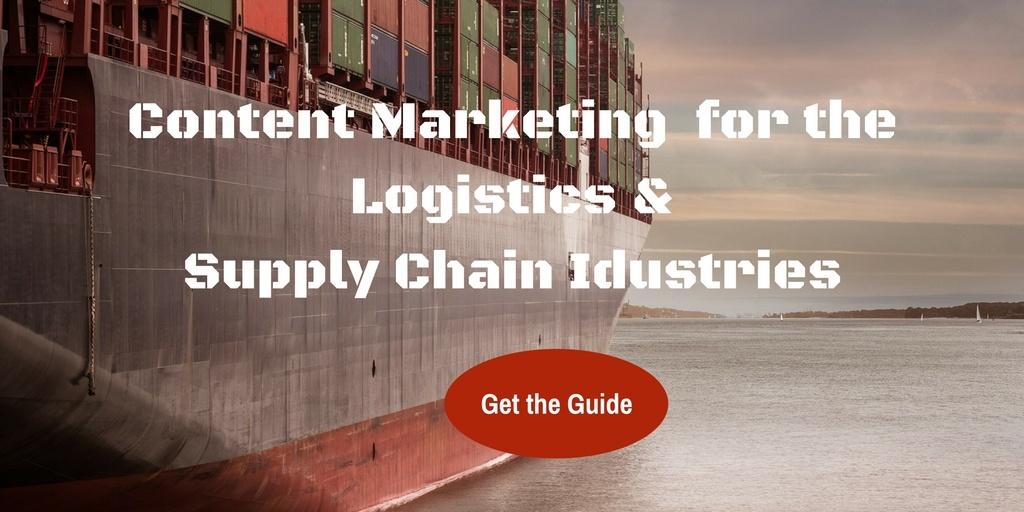
by Fronetics | Mar 14, 2017 | Blog, Content Marketing, Marketing, Social Media, Strategy
Keep these best practices in mind when determining how often to post to social media.
Creating valuable, relevant content in a strategic and consistent manner creates demand for your products and services and drives profitable customer action. But as BuzzFeed’s Jonathan Perelman said, “Content is king, but distribution is queen and she wears the pants.”
It’s not enough to just create interesting and pertinent content; you have to put it out there to reach your target audience. Moreover, the content needs to be delivered consistently over time, at the right time, and in the right place.
With social media networks changing daily, it’s hard to keep up with where to distribute content, much less how often. Countless studies have attempted to solve the social-media-frequency equation. And while audiences vary across industries, best practices give us some general guidelines.
Here’s our assessment of social media posting frequency.
Twitter: 40 per day*
*Big caveat here: 40 tweets per day is what we’ve found works for us and most of our clients. Let me explain.
Socialbakers suggests that posting to Twitter three times per day is the ideal frequency for brands. Buffer posts to Twitter 14 times per day. Fronetics happens to tweet 40 times per day. So last spring, after seeing the Socialbakers and Buffer stats, we conducted a month-long experiment to see how dropping our posting frequency closer to their benchmarks would affect our engagement.
As we’ve written about before, it wasn’t pretty. We confirmed that our engagement, web traffic, lead generation, and other key performance indicators are at optimal levels when we tweet 40 times per day.
Your company, or your marketing partner, should conduct due diligence and determine what the right frequency is for your business. Yes, you may realize a significant decline in engagement in ROI during your experiment. On the other hand, you may realize an increase in engagement and ROI — captured with lower output in terms of time and resources.
Facebook: 1 per day
Most companies find that posting 1 time per day is their sweet spot for most social media networks. Facebook is no exception: The network’s algorithm values quality over quantity, so the more engaged your followers are with your content, the more likely they are to see your posts. This also means that posting content that does not facilitate engagement can actually decrease the likelihood that followers will see your posts.
One sure way to encourage disengagement is by overwhelming your audience. We all have that friend or company we follow that posts too much — don’t be like that person.
Remember that the lifespan of a Facebook post (about 5 hours) is significantly longer than that of a tweet. So you don’t need to provide a constant stream of content to get your audience’s attention. Your focus should be distributing the most relevant, interesting content you can, at a time when most of your audience will be on Facebook.
Instagram: 1-2 per day
There’s an unwritten rule among Instagramers that a user shouldn’t post more than once per day. We generally agree for the same reason we don’t think brands should post more than once a day to Facebook: Don’t overwhelm your audience because the lifespan of your posts is pretty long. In fact, a Union Metrics study found that many Instagram posts continue to receive engagement for days — even weeks — after posting.
Most brands end up posting 11-20 posts per month. If you focus on compelling images with strategic messages, that’s probably a good benchmark to stick with. It’s important to note, however, that another Union Metrics study suggests posting consistency is more important than frequency. Again, taking the time to test the Instagram posting frequency that works best for your business is a worthwhile endeavor.
LinkedIn: 1 per day
A more formal and technical social media network, consider LinkedIn a platform for business-related content. Don’t post here more than once per day — and consider posting only during the workweek. Many professionals don’t check LinkedIn on the weekends, and your content could easily be missed.
Buffer reports that posting 20 times per month (once a workday) allows companies to reach 60% of their audience. To provide the most value for your LinkedIn followers, content should be less promotional and more heavily focused on industry-wide trends and insights.
At the end of the day, optimal posting frequency for your company rests heavily on the audience you want to reach. Experimenting with different social media networks and posting frequencies will give you greater insight into your ideal distribution approach. With these best practices as a guide, let your own analysis be your guide. Maintaining a dynamic and fluid posting strategy will ensure that your social efforts drive followers to action, rather than drive them away.
Related posts:

by Fronetics | Mar 1, 2017 | Blog, Diversity, Leadership, Logistics, Supply Chain
Fronetics spoke with 6 women leaders in the supply chain and logistics industries about their professional experiences and thoughts on the gender gap.
March is Women’s History Month, a time when we at Fronetics like to focus our attention on inspiring female leaders who are bridging the gender gap in the supply chain and logistics industries.
As we have written about previously, the lack of gender diversity in the supply chain is not because women do not have the skillset and ability to succeed within the industry. In fact, quite the opposite is true.
We believe that it is important to discuss the lack of gender diversity and point to research highlighting why the industry needs to increase the number of women in all positions, including the C-suite. Additionally, it is just as important to highlight the incredible women who already are working within the industry.
We have had the opportunity to interview 6 supply chain leaders about their professional experiences, as well as their thoughts on some of these issues.
6 women leaders in the supply chain
Kendrea Durr-Smith
Director of Global Trade Compliance, Arrow Electronics
Kendrea Durr-Smith has successfully lead a diverse global team to better support the needs of Arrow customers and suppliers. In our interview, she discusses the exciting changes her team has accomplished and offers some advice for women interested in electronics and trade compliance. Read the Durr-Smith interview.
Barbara Jorgensen
Co-Founder and Managing Editor, Electronics Purchasing Strategies
Barbara Jorgensen has more than 20 years’ experience as a journalist, working for leading electronics industry publications. In our interview, she discusses working in the supply chain industry and the changes she’s witnessed — both broadly and in specific regards to gender diversity — over the course of her career. Read the Jorgensen interview.
Hailey McKeefrey
Editor-in-Chief, EBN
In her extensive and distinguished journalistic career, Hailey McKeefrey has remained enthusiastic about the supply chain industry and her role within it. She spoke with us about how the industry has changed and how women interested in holding leadership positions can seize opportunities and advance their careers. Read the McKeefrey interview.
Cathy Morris
Senior Vice President and Chief Strategy Officer, Arrow Electronics
Cathy Morris “stumbled” into the supply chain by coincidence but now holds a top-level leadership role at a Fortune 500 electronics corporation. In our interview, she discusses how she got to where she is today and how to turn each step in a career into a valuable learning experience. Read the Morris interview.
Mickey North Rizza
VP of Strategic Services, BravoSolution
Now a Top Female Supply Chain Executive, North Rizza was a bored pre-law major who switched to materials logistics management when she discovered a love for negotiating when seeking charity items for a sorority fundraiser. She spoke to us about her rise to success, people who have helped her along the way, and advice she can offer to women interested in the supply chain. Read the North Rizza interview.
Kelli Saunders
President, Morai Logistics
Kelli Saunders is a big believer in mentorship. And millennials. And opportunities for women in the supply chain. In her interview, she discusses her career, her advice, and her perspective on challenges within the industry. Read the Saunders interview.
Throughout the month of March, we plan to continue this interview series to shine the spotlight on more of the admirable women who make the supply chain and logistics industries run. Make sure you’re subscribed to our blog or following us on social media to catch them all.
Related posts:


by Fronetics | Feb 16, 2017 | Consumer Electronics, Content Marketing, Marketing, Social Media, Strategy, Supply Chain
Here are two examples of consumer electronics companies leveraging social media to reach their target audiences, build brand awareness, and drive sales.
More and more companies are allocating budget to create a social media presence. That’s because, despite early hesitation, supply chain businesses understand that social media is an important marketing tool in today’s marketplace. The consumer electronics industry is no different: Participating in social media has never been more necessary.
Nearly 60% of consumers have taken a blog or social media post into consideration while shopping in a store. You may think — sure, that probably happens for fashion labels. But in fact, consumer electronics is the top product category influenced by social media posts, followed by fashion, then household items.
So what does this mean for you? Those dollars that you’re driving into social networking posts, tweets, and videos are reaching customers and ultimately affecting their purchasing decisions. Well, I should say, only if you’re driving them in the correct places.
To effectively leverage social media in consumer electronics, you need to have a social media strategy that aligns with your business goals. You need to be using the right channels, distributing the right content, and posting at the right time.
Let’s take a look at two companies that are doing it right and why that is.
Consumer electronics companies leveraging social media effectively
1) GoPro
GoPro designs portable, waterproof cameras that users can strap on their helmets, handlebars, or surfboards to record their experiences. The brand’s target audience includes extreme-sports lovers and daredevils who like to watch and share their adventures.
As part of their social media strategy, GoPro encourages their customers to contribute their videos to its various social media channels. It’s a win-win for both the company and users: GoPro receives tons of content that is interesting and relevant to its users, and the users get to show off their skills (or tumbles). Today, the company has over 4.5 million YouTube subscribers and more than 1.3 billion views of their videos.
Lesson: Know your target audience. GoPro understands who it is trying to reach, what they like to do with social media, and where they are active. It gives users a place to share their accomplishments, and is able to grow brand awareness and brand loyalty at the same time.
2. Beats by Dre
Beats by Dre, owned by Apple and founded by Dr. Dre, is an audio brand that sells headphones, earphones, and speakers. The company is active on several social networking platforms, but its genius lies in how it uses those platforms in different ways to reach different consumers.
On Facebook, Beats by Dre finds the most success by sharing stories and experiences that appeal to music and sports enthusiasts. Content includes inspirational photos and videos of athletes and artists using the brand’s products.
On Twitter, the company has created a dedicated support account to quickly reach customers in need of service. This helps amplify the message that the company offers excellent customer service, and the team is able to quickly and broadly share users’ positive feedback.
Pinterest is an entirely different beast for Beats by Dre. The company found its users were most likely to pin high-quality, interesting images, so that’s exactly the kind of content the brand shares via Pinterest. It also curates “mood boards” around the release of new products. It helps build excitement and awareness surrounding a product launch — and it achieves the longer-term strategy of building brand awareness through its users’ social sharing.
Lesson: What works on one social media network might not work on another. By distributing different kinds of content on different channels, Beats by Dre has been able to maximize the impact of each social media channel and engage with the segment of consumers that operates there.
Today’s consumers are more educated than ever. By understanding how to leverage your social media channels to reach and best serve your target audience, you can make your tweets, posts and videos a success.
Related posts:

by Jennifer Hart Yim | Feb 13, 2017 | Blog, Logistics, Strategy, Supply Chain
Supply chains must accept that they cannot equal the power of Amazon’s supply chain without embracing these new trends.
This guest post comes to us from Adam Robinson, marketing manager at Cerasis, a top freight logistics company and truckload freight broker.
Amazon’s supply chain continued push deeper into new and existing markets will define additional trends in the supply chain throughout the coming year. While supply chain entities struggle to stay competitive with the e-commerce giant, more organizations will look for ways to eliminate inefficiencies and boost operations. Fortunately, these five trends may alleviate some of the strains of competition by giving supply chain partners an advantage in the global market.
Top 5 Trends to Know to Compete with Amazon’s Supply Chain
1. Robotics Will Grow More Versatile.
Amazon’s purchase of Kiva Robots changed the landscape of robotics in the supply chain. However, new companies are being created and developed to fill the void. The robotics company Starship released a robot that delivers meals and groceries to people in Euro metro markets. Meanwhile, Lowe’s has created the LoweBot, which boosts customer service, explains Dan Gilmore of Supply Chain Digest.
More companies are turning to robotics to find new ways to bridge the divide between a dwindling number of customer service representatives, including store associates, and maintaining around-the-clock operations. Across the spectrum, robotics will become more versatile and accessible. In other words, robots will gain new movements, capable of picking items from shelves in warehouses and storefronts.
Per IDC Manufacturing Insights, the use of robotics will become more platform based through robot-as-a-service, reducing costs of deployment and maintenance. Furthermore, the speed of operation of robots will increase more than 30 percent by the end of 2017. Clearly, robotics will become more important in 2017 than during any previous year.
2. Technology Will Reshape Procurement Practices.
Better procurement practices translate into better overall sales, but the role of procurement in driving sales’ statistics will change throughout 2017. Today, procurement drives up to 67 percent of sales, explains Johnathan Webb of Forbes magazine, as procurement professionals look for innovative ways to produce effective, superior products.
For example, Johnson & Johnson procurement professionals actively review market trends before making purchases. Upon identifying these trends, a correct forecast of supply demands can be generated. Thus, the role of procurement has become more focused on being physically involved in market news and research, not just signing purchase orders in an office.
3. More Businesses Will Create E-Commerce Platforms.
Amazon’s supply chain empowered the e-commerce market by giving everyone an opportunity to sell their goods online, which has made competing with Amazon difficult at best. Amazon’s supply chain expansion culminated in more companies looking to enter e-commerce without giving shares to Amazon. Companies expanded e-commerce and omnichannel solutions simultaneously as well, reports Steve Banker of Logistics Viewpoints.
For example, Walmart and Kmart redesigned their mobile e-commerce interface for consumers, making shopping and purchasing online easier and integrated with major companies. A simple search for a product on Walmart.com reveals partnered listings with Wayfair and third-party sellers, much like Amazon’s current vendor options. Moreover, customers can make purchases online and have them shipped to the store or their home. At Walmart, customers can even pick up orders without ever getting out of the car now. Ultimately, more businesses will seek out partnerships with bigger companies to stay competitive with Amazon’s bare price points and ease of use.
4. User Preferences Will Enhance Mobile Management Systems.
Traditional warehouse management systems (WMS) lacked integration with other systems. Procurement strategy was not always evident. Accessibility of systems depended on in-house IT departments, and upgrading access terminals could cause extreme delays and problems in operations. However, newer management systems, such as a comprehensive transportation management system (TMS) that integrates warehouse management with transportation management, are starting to offer more accessibility and personalization options.
In other words, accessibility and personalization allow warehouse managers and staff members to define metrics relevant to new products and current operations, test new processes, and effectively manage the flow of goods. Similarly, new mobile options, ranging from Android tablets to compact barcode scanners, will reduce inconsistencies and errors across the supply chain, explains IRMS 360. Paired with the advancements of predictive analytics and the Industrial Internet of Things (IIoT), more data will result in more efficient processes, creating a positive feedback loop throughout an organization.
5. Contingency Planning Will Become a Standard Practice.
Amazon’s supply chain has proven that not planning will result in the failure of small and medium-sized businesses. Furthermore, natural disasters reap $211 billion from the global supply chain annually. Having a larger global footprint is how Amazon’s supply chain has been able to maintain operations in the face of natural or man-made disasters. This is contingency planning.
The IIoT empowers contingency planning by giving supply chain entities real-time data from an endless number of sources, which range from online browsing data to point-of-sale data. Consequently, supply chains can react appropriately and divert resources to maintain operations. But, the key to utilizing this information lies in knowing what to do and how to do it when an event occurs. In other words, more companies will diversify distribution, supplier and storage networks throughout 2017 to prepare for what might happen in the future.
The Big Picture.
Supply chains must accept that they cannot equal the power of Amazon’s supply chain without embracing these new trends. New technologies are great, but chances are Amazon has already implemented them. Rather than falling into despair, you can use these trends to re-evaluate processes and practices in your organization, which will help you stay competitive with Amazon.
The complexities of the global supply chain rely on your willingness to take advantage of new trends and technologies today, as well as tomorrow, so do not squander this opportunity.
Related posts:

by Fronetics | Feb 9, 2017 | Blog, Content Marketing, Marketing, Strategy
Time can be a blog’s best friend when it comes to gaining leads, but there are a few things you can do to accelerate lead-generation efforts.
Patience is a virtue, but it’s a particularly difficult one to mind when you’re trying to get your business off the ground.
Whether you are just starting out, are trying to turn things around, or are just looking to inject a little energy into things after some slow growth, your company has probably made an investment in your marketing efforts. Now comes the tough part, if you’re on the marketing team: The bosses are going to want to see results in the form of leads and sales.
Fair enough. Blogging is one of the best ways to boost your lead-generation efforts. The trouble is, however, that is normally takes some for those benefits to come to fruition.
I’m not going to say it’s a marathon…
But blogging is certainly not a sprint. Your posts need time to start drawing traffic — and then, from traffic comes leads. So the transitive property tells us that lead generation takes time. Here’s why.
As with many things, blog posts become more credible with age. That is to say, search engines value things that older content has had more time to accumulate, like social shares and referrals from other web pages. The more relevant a blog post proves itself to be to readers over time, the higher it will rank in search engine results.
On the other hand, new blogs without much content don’t have much to tell search engines. Search engines don’t trust them yet — and search engines’ algorithms are designed to avoid leading searchers down a stray path. So posts from new or young blogs are less likely to appear within the first page(s) of search results, which is key to sourcing organic traffic.
So what’s a marketer who is charged with generating leads to do?
Set realistic expectations
Be realistic about how quickly your blog will start generating leads when you first set your content strategy. Consider things like the length of your sales cycle. You can’t expect a reader to hasten down the sales funnel any faster than a normal prospect. And remember that the reader probably won’t catch your post on the first day it’s published. (More on that later.) So, if your sales cycle is 90 days, you might see a lead 90 days after you start publishing. But, in reality, it will probably take a little longer.
Instead of relying entirely on leads to define success, you should spend the first months focusing on the metrics that are precursors to lead generation. Increased web traffic and greater social reach and engagement, for example, are solid proof that the needle is moving in the early days of a new content marketing program. Set goals for these metrics, and communicate with leadership that they are all indicators that your content strategy is working, and that leads should follow in time.
But how can I get my blog to generate leads faster?
If you want to accelerate lead generation, it’s going to take a greater investment. But if you’re willing to commit more time and resources to speed things along, here are two things you can do.
1. Publish more frequently.
Search engines value posting frequency because it shows that your blog is a consistent source of content. The question is, how much can your organization publish without experiencing a decline in quality and relevancy? Those are other factors influencing search engine rankings, not to mention readership, leads, and conversions.
But “more frequently” doesn’t have to mean going from 0 to 60. Even publishing once more per week can make a dramatic impact. This story, for example, shows how publishing one more post per week helped a client’s web traffic increase by 23%, sales leads double, and a prospect convert to a customer — and that was just in just one month.
A HubSpot study showed a tipping point around 400 total blog posts — blogs with 401+ total posts generated twice as much traffic as those that had published 301-400 posts. And more specifically, B2B companies with 401+ total blog posts generated nearly 3X as many leads as those with 0-200 posts. The faster you can reach that 400 mark, the quicker your results.
2. Don’t neglect your old content
It’s important to keep in mind that the majority of your web traffic (aka potential leads) will first encounter your older content. Looking at Fronetics’ most-viewed posts last month, for example, 80% were published at least six months prior. In fact, 50% were more than a year old.
What does that mean? For one, you should keep tending to your already published content, particularly those posts that prove to be a consistent source of traffic. Update information; add links to new related posts or other relevant resources; and seek opportunities to insert or update calls-to-action to current offers and campaigns. Making sure those older, consistently popular posts continue to serve and engage your readers will increase your chances of conversion.
Secondly, it’s crucial that you look beyond how the posts you published recently performed. Something that doesn’t get a lot of views in the first week may be a huge traffic source and lead converter in a little time. Many content management systems, like HubSpot, can generate attribution reports, which tell you which web pages users most often visit before converting to a lead. Compare these pages with your high-traffic pages that don’t make the list to see how you can create more opportunities for lead conversion on the pages earning the most traffic.
Most importantly, if you invest the time and resources to run a blog, you owe it to yourself to see it through to success. Just because you don’t generate hundreds of leads in the first few months doesn’t mean you won’t eventually. It’s just going to take some time.
Related posts:








